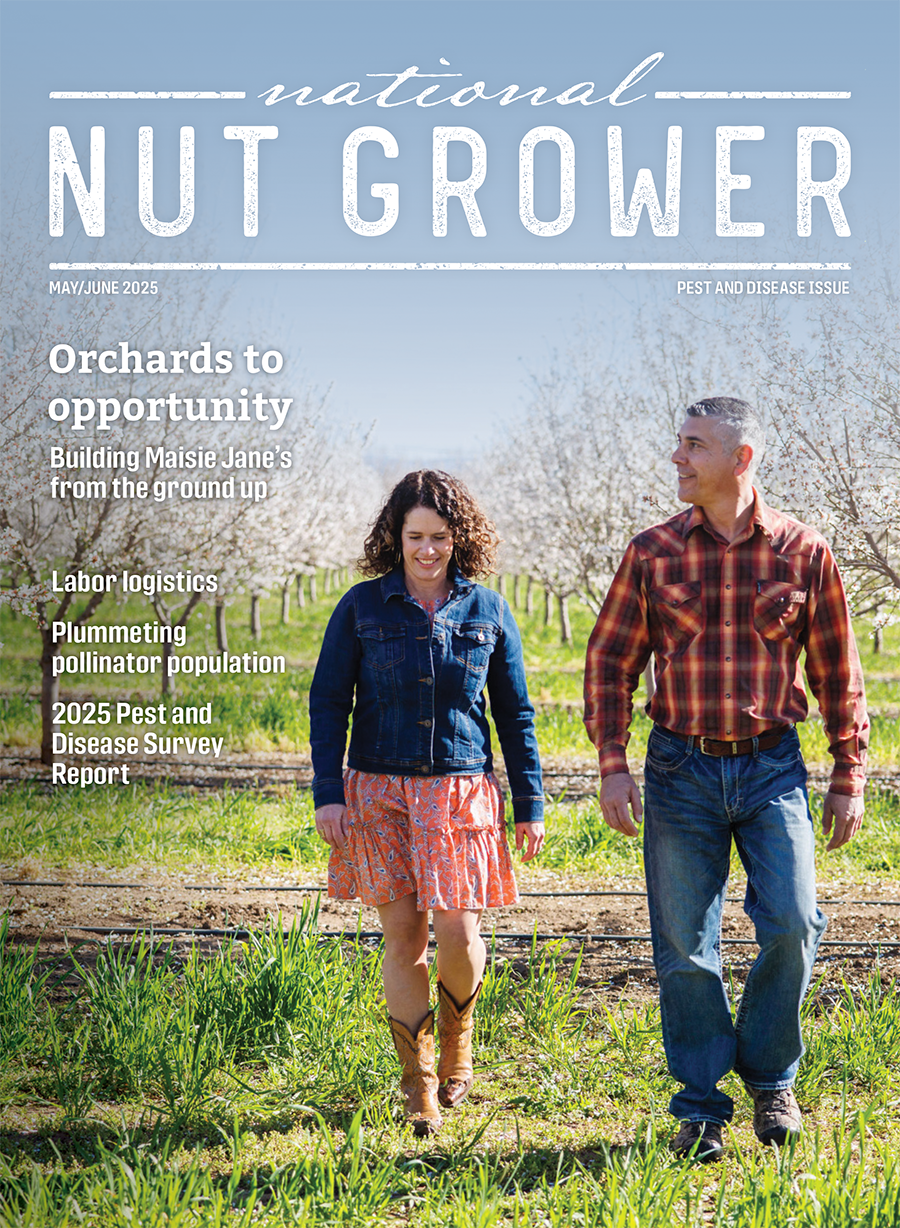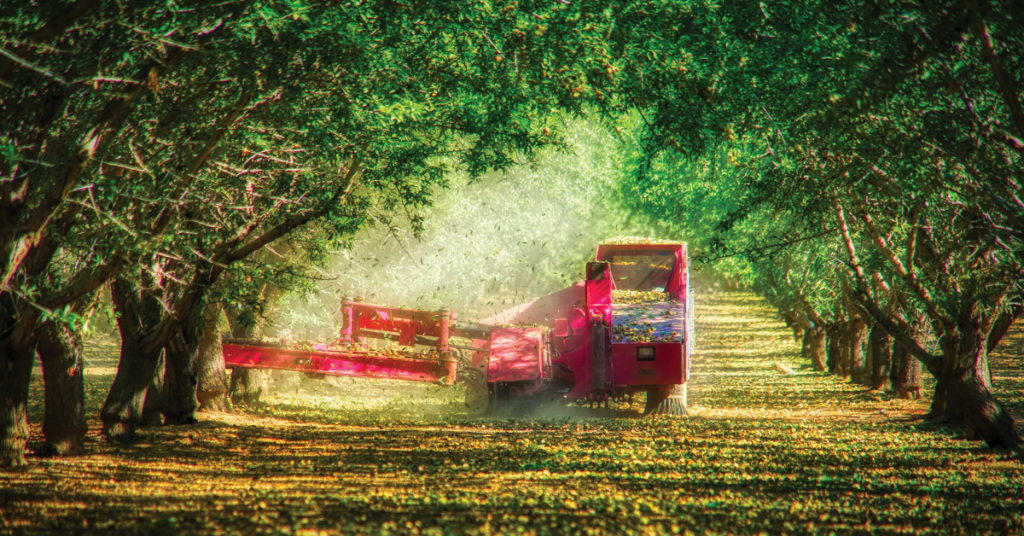
July/August 2023
Adapting to challenges
Employing environmental practices like dispatching owls to control rodents and a dedication to its employees help Henderson Farms, a northern California almond grower, huller and sheller, overcome numerous trials.
Henderson grows 5,500 acres of almonds, walnuts and pecans on land the family operation owns, manages or leases in Arbuckle, California, northwest of Sacramento. Its operations include handling all aspects of growing almonds, its major crop, from planting new orchards, growing, harvesting and processing.
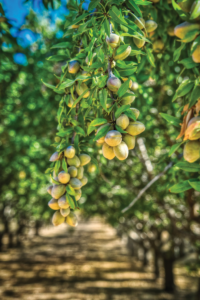
Henderson Farms has been growing almonds since the 1950s. Most of its orchards are in two counties, but also works with growers from other counties who bring their almonds to Henderson’s hulling and shelling operation.
The Hendersons contend with a long list of challenges and obstacles. Water shortages accompanying an extreme drought along with a major northern California freeze affected much of Henderson’s production and ranches, particularly huller and sheller input costs.
To deal with the freeze, Henderson Farms hired fewer seasonal employees, worked closely with growers to gauge approximate expected volume and improved plant efficiencies, said Jonnalee Dunn, growth and development manager.
“Our struggles are similar to others who farm in California,” she said. “There have been times of drought, times of floods, rain during harvest, frost during bloom, marketing issues, increasing government regulations, a current high inflationary environment, supply chain issues, theft, the list could go on. We know those are the realities, but we come to work every day honoring each other and having a positive attitude.”
Soil, water focus
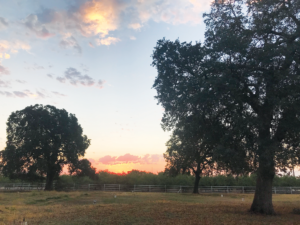 Yearly soil and water samples help Henderson Farms manage nutrient needs and save water. Micro irrigation sprinklers and drip lines water all orchards while the farm constantly checks for hose leaks, ensuring water flows to where needed and preventing weed growth. Moisture monitoring sensors are employed while leaves are sampled for moisture throughout the growing season to ensure correct amounts of nitrogen and other nutrients are applied to the trees.
Yearly soil and water samples help Henderson Farms manage nutrient needs and save water. Micro irrigation sprinklers and drip lines water all orchards while the farm constantly checks for hose leaks, ensuring water flows to where needed and preventing weed growth. Moisture monitoring sensors are employed while leaves are sampled for moisture throughout the growing season to ensure correct amounts of nitrogen and other nutrients are applied to the trees.
“One size never fits all for any orchard, so we work closely with our licensed pest control advisor and utilize university research to help find the right rootstock with the right varieties with the right irrigation set-up for our particular soil type and water needs,” Dunn said. “Planning your orchard correctly from the beginning is the best step to control pests/diseases, save water and reduce labor. The trees are spaced according to soil type, rootstock and variety so that we get enough light penetration and air movement to maximize yield and minimize disease pressures.”
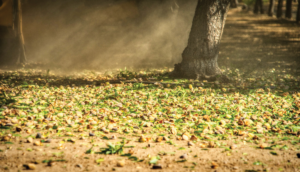 Nonpareil, Henderson Farm’s main almond variety, continues as the industry’s best all-around almond in terms of production and price. For cross pollination purposes, Henderson farms many other varieties. It has recently been planting many Independence almonds, a self-pollinating variety.
Nonpareil, Henderson Farm’s main almond variety, continues as the industry’s best all-around almond in terms of production and price. For cross pollination purposes, Henderson farms many other varieties. It has recently been planting many Independence almonds, a self-pollinating variety.
Henderson partners with Blue Diamond and the California Almond Board to implement sustainable practices including planting bee-friendly cover crops, utilizing water saving technology and minimizing fertilizer inputs.
To control rodents, Henderson Farms erected 16 owl boxes on some of its properties as a natural and effective way to control gophers and other rodent populations.
A sustainable focus
An iPhone strapped to a pole records owl movement. When Dunn and her husband first planted the orchard, they saw many gopher holes. Since erecting the owl boxes, they barely find any.
Maintenance of the Barn Owl Box Co. boxes is minimal while setup entails a couple of hours.
“If your pest is a nocturnal rodent, then I highly recommend trying owl boxes,” Dunn said. While Dunn said the owls don’t control ground squirrels or other diurnals as much. The hawks the Dunns see perching help control rodents.
“Not all of our orchards have gopher problems, so I think you have to know the unique characteristics of your field and find the most creative, cost-effective way to attract beneficial bugs and deter pests,” she said. “This might mean putting up owl boxes, it might mean planting bee-friendly plants along borders or planting cover crops. Every orchard is different and takes unique creative solutions.”
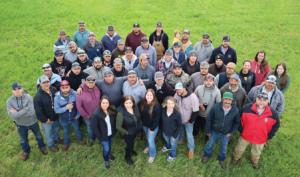 Instead of heavy advertising or marketing, Henderson has a passion to maintain a positive work culture. “We have found that when we can do that well, the business and opportunities come,” Dunn said. “We encourage employees to go after their own goals and partner with them when we can see they have the passion, skills and team to go after the opportunity.”
Instead of heavy advertising or marketing, Henderson has a passion to maintain a positive work culture. “We have found that when we can do that well, the business and opportunities come,” Dunn said. “We encourage employees to go after their own goals and partner with them when we can see they have the passion, skills and team to go after the opportunity.”
HF, Henderson’s chemical, fertilizer and inventory department, originated from a manager to expand and exercise more control over input costs. A finance manager’s bookkeeping passion led to a bookkeeping service for other companies.
Sweetheart Vineyards resulted from friend and employee Brooke Bachmann’s dream of running a vineyard and selling her own wine.
Looking to the future, Henderson is investing in organics. This year, the company dedicated 22 acres of almonds to organic farming.
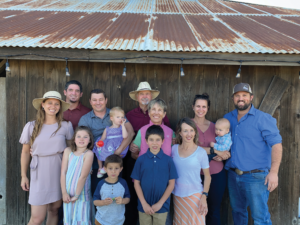 In 1955, Robert Henderson, an instrument repairer at a San Francisco Bay area arsenal, bought a 20-acre almond orchard in Arbuckle. In 1958, he inherited half of a 30-acre almond orchard. With the arsenal relocating to Utah, Henderson wanted to remain in California and moved his family and wife, Elizabeth, to Arbuckle, where he bought-out the grove’s owner. Shortly after moving to Arbuckle, a major freeze forced them to sell their first orchard.
In 1955, Robert Henderson, an instrument repairer at a San Francisco Bay area arsenal, bought a 20-acre almond orchard in Arbuckle. In 1958, he inherited half of a 30-acre almond orchard. With the arsenal relocating to Utah, Henderson wanted to remain in California and moved his family and wife, Elizabeth, to Arbuckle, where he bought-out the grove’s owner. Shortly after moving to Arbuckle, a major freeze forced them to sell their first orchard.
In 1979, Gary Henderson, the couple’s youngest son, moved with his new wife, Lori, to Arbuckle to farm after graduating with a crop science major from Cal Poly in San Luis Obispo. Lori taught elementary school while Gary managed the daily operations of Henderson Farms, their newly-formed orchard management company incorporated in 1982.
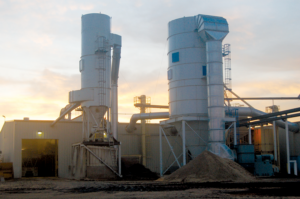 As the management company succeeded, Gary and Lori entered into leases and bought small properties. They expanded into walnuts and peaches and briefly tried beekeeping. To vertically integrate, in 1992 the couple partnered in construction of A&H Hulling, an almond huller and sheller. In 2018, the couple bought their partner’s share and renamed it Henderson Hulling and Shelling.
As the management company succeeded, Gary and Lori entered into leases and bought small properties. They expanded into walnuts and peaches and briefly tried beekeeping. To vertically integrate, in 1992 the couple partnered in construction of A&H Hulling, an almond huller and sheller. In 2018, the couple bought their partner’s share and renamed it Henderson Hulling and Shelling.
All of Gary and Lori’s children, Jonnalee Dunn, Kara Spooner and Wesley Henderson, and their spouses are involved in almond growing. Their orchards contribute to Henderson’s success.









